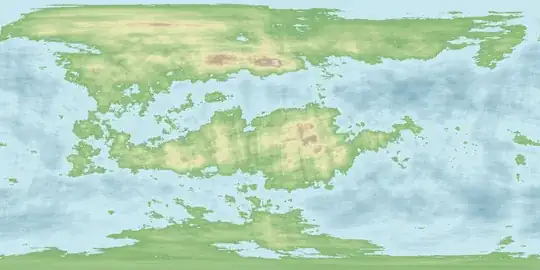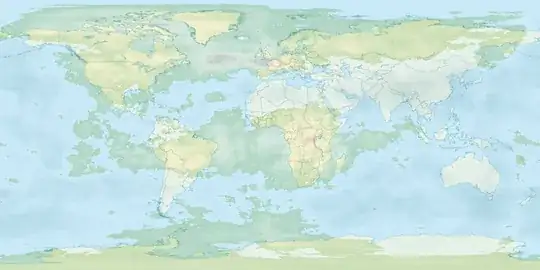In this scenario, there is a binary star system comprised of one naturally-made star and another made by the hands of some mysterious hyperadvanced civilization. The latter is a white giant, an artificial, unnatural star that is pretty much a white dwarf scaled up to 1,500 times as wide as our sun (temperature and luminosity, apparently, is tied to the stellar equivalent of the Square Cube Law.) But because of its inactivity and inability to emit radiation, it can shine for trillions of years rather than just a few million. But the former is a natural star, a K5 orange dwarf star, 74% as wide, 69% as massive and 16% as bright as our sun. Such stars burn their hydrogen so slowly that they can last not for ten billion years like our sun, but 34. And they are so hot that they can have a habitable zone that isn’t close enough to tidally lock their planets, which would defeat the purpose of habitability in the first place. Another, equally important, factor about orange dwarves is that they emit very low quantities of ultraviolet radiation. And with this star orbiting the white giant, the planet orbiting only the orange dwarf (in an S-type orbit) won’t have to worry about getting too dark or too cold.
Here is the map of the planet. (Also, since it was crafted by the hyperadvanced civilization rather than nature, its elevation colors are accurate. Green represents sea level and white represents the height of Mount Everest.)
And here is how it looks in comparison to Earth, because latitude is very important:
It is identical in every way to our Earth-Moon cycle, but with the following differences:
- 91% of Earth's gravity
- Atmospheric thickness of 370 miles
- Rotation of 26 hours
- Revolution of 417 rotations
- CO2 content: 4500 ppm
- O2 content: 35%
- Axial tilt: 19.7-26.9 degrees in a 21,500-revolution-cycle
All said, what would the climate look like on this planet?

